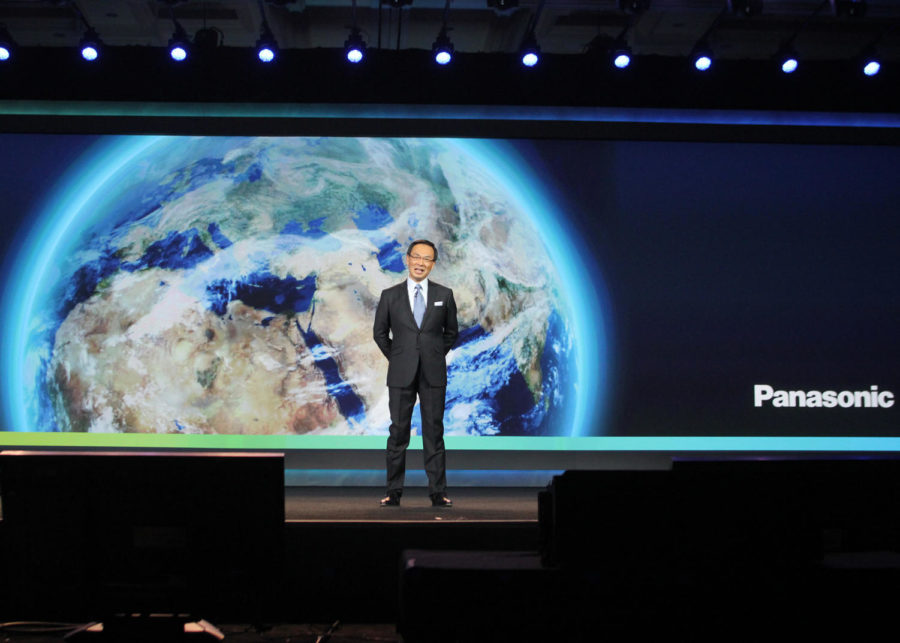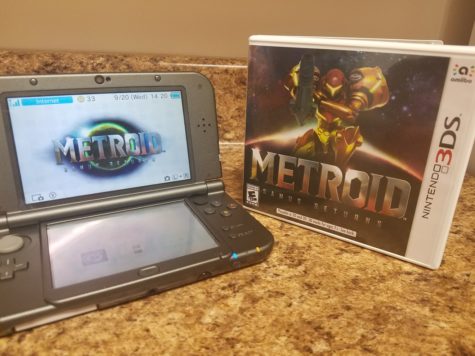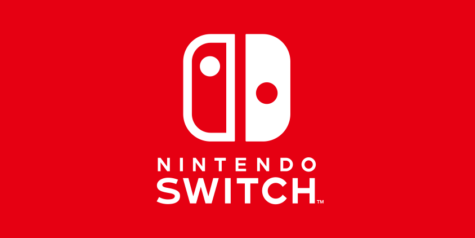2013 International Consumer Electronics Show unveils new products
Panasonic’s Mr. Kazuhiro Tsuga delivers the opening keynote at the 2013 International CES. Photo courtesy of Consumer Electronics Association.
January 9, 2013
The 2013 International Consumer Electronics Show has arrived and is kick-starting the new year with the latest technology concepts and reveals from companies all over the world. Held annually in the Las Vegas Convention Center, the show is the largest convention in the world for debuting and demonstrating the products of tomorrow.
The show, lasting from Tuesday, Jan. 8 through Friday, Jan. 11, has already seen product reveals that were expected and unexpected from the industry. Updates to already popular trends, like tablets, are being showcased as well as prototype products.
For example, at NVidia’s conference and keynote, presenters on stage announced their next generation mobile processor, called the Tegra 4. This new CPU will be featured in already-announced devices that will go on sale as early as the first quarter of 2013. The company boasted Tegra 4 is the “fastest mobile processor” available today.
NVidia’s keynote, however, was not over after Tegra 4. Following the announcement of the mobile CPU, the company unveiled a product that was kept under very tight wraps until the show. Those watching were caught by surprise when the company gave the tech world its first look at Project Shield. This handheld mobile gaming platform has a fold-out touchscreen attached to a controller roughly the size of an Xbox 360 controller. This is NVidia’s first foray into its own, solely-produced hardware device specifically targeted toward mobile gaming. Showing the power of the new Tegra 4 built inside Shield, NVidia demonstrated the handheld’s livestreaming capabilities on stage and then allowed media and consumers try it out.
NVidia’s competitor, Qualcomm, responded by showing their newest line of mobile processors. Qualcomm’s processors are found in nearly every mobile smart device, especially phones, on the market today.
This is just one example of companies expanding on old concepts and introducing entirely new ones. Mark Templin, Lexus’ vice president and general manager, spoke about the Integrated Safety Management Concept the company has been working on. Much like Google has been testing their own fully-autonomous cars over the last few years, Lexus continues to develop their own “smart” safety features, which they say are the future of automobile safety.
“The 2013 Lexus LS is graphic evidence of how automated technologies have advanced in the last decade,” Templin said.
The Lexus LS was shown with passive and active safety tech like automatic brakes, numerous proximity and awareness sensors, and multiple computer chips. As Lexus said, “With the goal of being the most aware car ever built.”
TVs are a huge part of the convention every year, and this year was no exception. The types of televisions shown, however, are a glimpse into the future that other years’ events haven’t touched. With many companies introducing what is to be the next standard of television viewing, the expensive 4K televisions of the future got an extended place in this year’s spotlight.
These 4K televisions have four times the resolution and pixel density of that which is considered today’s “full HD”, which is 1920×1080. The televisions have resolutions of 3840×2160, and the result is better than anything on the market. The televisions are starting anywhere from $10,000 to $20,000, with many exceeding the $20,000 and $25,000 mark due to the current cost of production. Expect prices to go down as the industry adopts these new screens in the years to come.
New tablets and ultrabooks, like the Asus Transformer with Windows 8 and the Asus Taichi with dual screens, are continually pushing the merge between tablets and laptops that mobile computing sees. Tablets get the same specifications as bulkier laptops, but with the added features of detachability and touchscreens. This merger is an experiment for many companies. Companies with products like the aforementioned Asus books have been waiting for International Consumer Electronics Show to see how consumers respond.
Other unexpected news was the gaming company Valve’s semi-reveal of the “Piston” console. Known for their digital distribution software called Steam on the PC and Mac, this is the company’s first hardware production. Not much was revealed, save the features of bringing PC gaming and cloud services to consumers’ TVs in ways never before seen.
More devices were unveiled that could have made it into this article, the most popular of which can be found at the convention’s website or through the numerous media outlets who have been covering the show since before it began. Ames247 will post more updates as the show continues.












